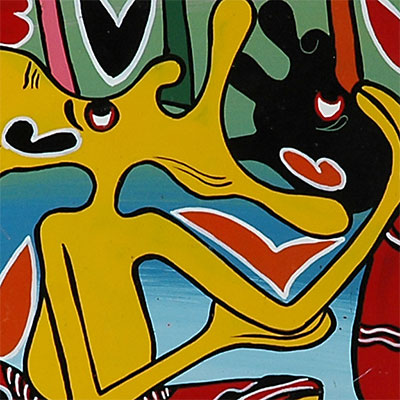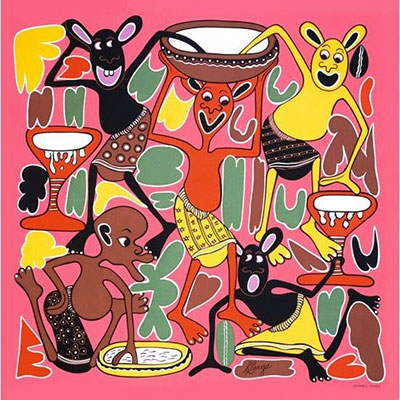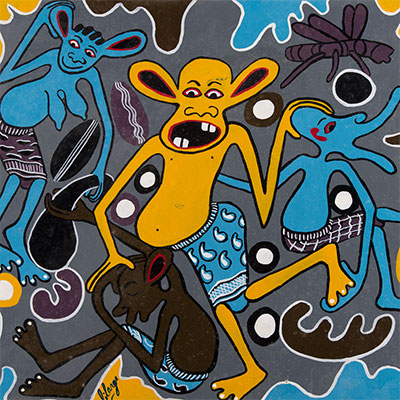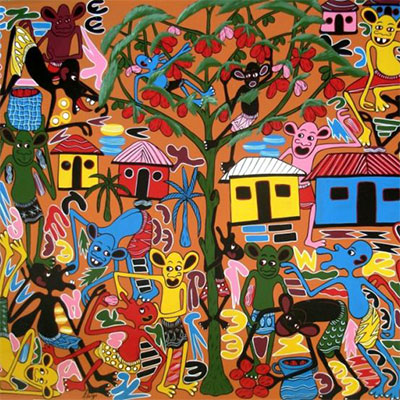GEORGE LILANGA
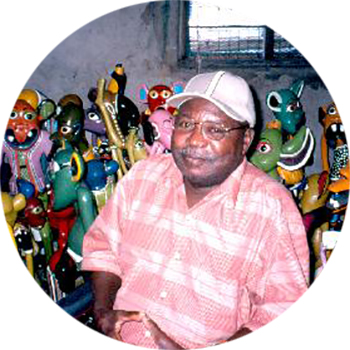
GEORGE LILANGA ART
George Lilanga’s colourful artworks underscore a whimsical evolution from traditional Makonde art, which is the source of the shetani fantastic creatures depicted in virtually all of Lilanga’s paintings and sculptures. While, traditionally, Makonde sculptors choose the finest woods for their pieces and would frown upon painting over the woods’ natural textures, the bright enammel multi-colour painting technique pioneered by George Lilanga gives his pieces a more contemporary aesthetical appeal and a unique style that has made them popular with collectors and art dealers. As a result, George Lilanga became a reference in african art and enjoyed considerable commercial success in the latter part of his life; prices for his pieces were further boosted after his death in 2005.
However, many pieces have been attributed by gallerists to George Lilanga based solely on their ‘Lilangalike’ appearance. Because pieces sold as ‘Lilangas’ number in the many hundreds it stands to reason that George Lilanga could not possibly have crafted them all himself, in particular in view of his frail health during the last decade of his life when the bulk of such pieces was produced.
The reality was that George Lilanga mentored and inspired several artists who worked with him and capitalised on the value of the ‘Lilanga’ label. After George Lilanga’s death, several of those artists and new ones continued to produce under the Lilanga attribution.
A lot of George Lilanga’s lifetime art works can be found in leading international collections like The Contemporary African Art Collection (CAAC) of Jean Pigozzi and Hamburg Mawingu Collection HMC of Peter-Andreas Kamphausen. Directly after the death of the artist the HMC: George Lilanga Collection has presented in a work directory for the first time a systematically and thematically complete summary of Lilanga’s work (see references). In addition, the book explores the traditional roots of East African Makonde art as well as four decades of Lilanga’s artistic development with different materials and techniques including sculpture, paintings, etchings, drawings and metal works. Currently the HMC publish the George Lilanga News as an online blog with information about the artist, his art works, exhibitions and other interesting background material. Also in 2005 the African Collection series (Skira Editore, Milan) published a well-illustrated book on Lilanga’s work with useful information.
ARTWORK
